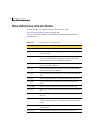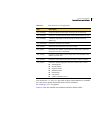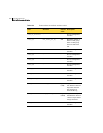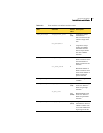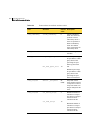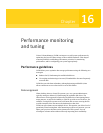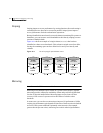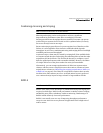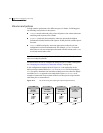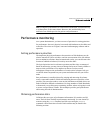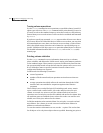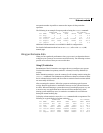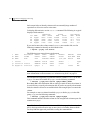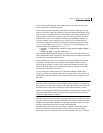
464 Performance monitoring and tuning
Performance guidelines
Striping
Striping improves access performance by cutting data into slices and storing it
on multiple devices that can be accessed in parallel. Striped plexes improve
access performance for both read and write operations.
Having identified the most heavily accessed volumes (containing file systems or
databases), you can increase access bandwidth to this data by striping it across
portions of multiple disks.
Figure 16-1 shows an example of a single volume (HotVol) that has been
identified as a data-access bottleneck. This volume is striped across four disks,
leaving the remaining space on these disks free for use by less-heavily used
volumes.
Figure 16-1 Use of striping for optimal data access
Mirroring
Note: You need a full license to use this feature.
Mirroring stores multiple copies of data on a system. When properly applied,
mirroring provides continuous availability of data and protection against data
loss due to physical media failure. Mirroring improves the chance of data
recovery in the event of a system crash or the failure of a disk or other
hardware.
In some cases, you can also use mirroring to improve I/O performance. Unlike
striping, the performance gain depends on the ratio of reads to writes in the disk
accesses. If the system workload is primarily write-intensive (for example,
greater than 30 percent writes), mirroring can result in reduced performance.
HotVol HotVol
PL1 SD3
Another
Disk 1 Disk 2 Disk 3 Disk 4
HotVol
PL1 SD4
Less
important
volume
HotVol
PL1 SD2
Lightly
used
volume
Home
directory
volume
Cool volume
PL1 SD1
volume



